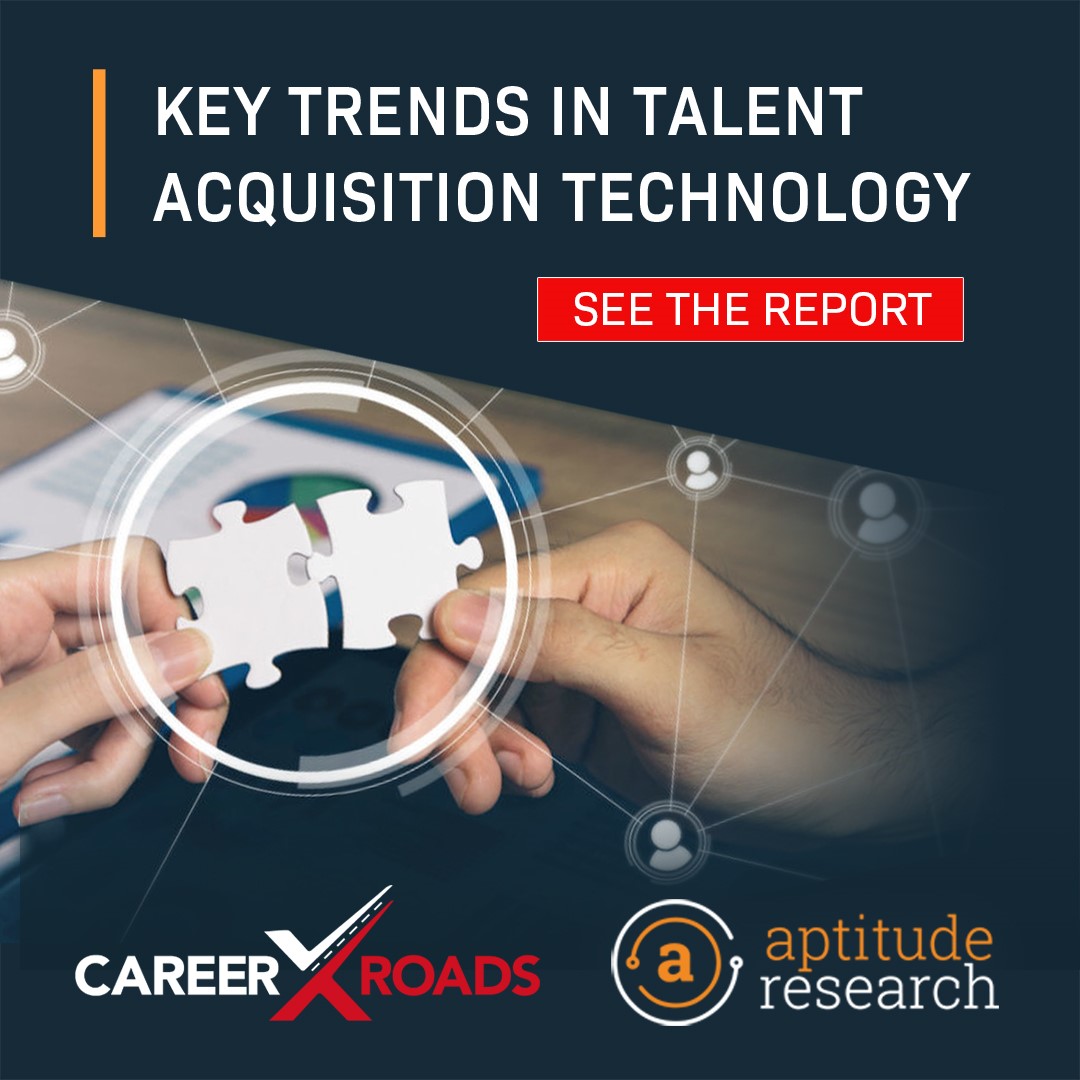The energy at this year’s HR Technology Conference is hard to describe. This is an industry that thrives on connections. And there was no shortage of connections at this year’s event. Customers built closer relationships with solution providers. Partnerships were established. And even competitors explored opportunities with each other. This is an industry willing to share and an industry willing to learn. We have a unique opportunity to stay connected as vendors, practitioners, and thought leaders and something we should never take for granted. It is a great time to be in HR Technology.
I am still processing much of what I learned over the past week but some of the obvious themes include next generation assessments, communication solutions (yes, chatbots), employee experience solutions, and talent acquisition. Several years ago, startups were driving this market. Today, the focus has been on traditional providers that are setting the pace for innovation through enhanced products and partnerships.
Here are some of my observations and some providers worth checking out:
Assessments: Companies are increasing their investment in pre-hire assessments this year. In fact, according to Aptitude Research Partners’ 2018 Assessment study, 71% of companies are leveraging at least one assessment provider and 57% of these companies are using two or more providers. Until very recently, assessments have been a very stagnant market with little innovation. In fact, only 25% of companies in Aptitude’s 2018 Hire, Engage, Retain study are considering a mobile assessment solution. The good news is that we are now seeing tremendous innovation in the assessment space from both startups and traditional assessment providers. As my friend Jonathan Kestenbaum at Talent Tech Labs says: “Assessments are back in style”. This market has reinvented itself to be more predictive and candidate friendly. Below are some providers that impressed us last week:
– Infor: Infor’s Talent Science is embedded into its talent suite- making assessments the framework of every talent solution. The candidate experience has been a priority over the past year and the assessments are mobile optimized. Infor has been successful at reducing the time to complete an assessment by 40% and at making assessments more predictive through the use of machine learning.
– HireVue: Through the acquisition of MindX and its own product development, HireVue has established itself as a strong contender in the assessment space. Its’ focus is on game-based assessments that are predictive and ensure that candidates are more engaged in the process.
– Shaker: If you are familiar with the assessment market, you probably know Shaker’s Virtual Job Tryout. It is a leader in game-based assessments. Shaker has made significant changes in the past year with a new leadership team (industry experts), global growth, and product innovation. It is focusing on areas such as internal mobility, predictive assessments, and mobile solutions.
– SHL: Since going independent six months ago, SHL has moved away from a traditional assessment business and is focused on helping companies transform their workforce capabilities. It does this through the combination of science, technology, and data. It offers both pre-hire and post-hire assessments (talent acceleration) and focuses on the context of the work environment.
Candidate Communication: Today’s candidates are making smarter decisions about what they want from an employer. They are diving deeper into job sites, career sites, and social media to get a clear picture of an organization before making a connection. They want to understand if the skills they have are the skills needed for the job. Employers are finding better ways to communicate with candidates but they less than 40% companies provide relevant information to help candidates make better decisions. Companies want to do better and they are looking to providers to help improve communication (often through chatbots). Below are some companies improving candidate communication:
– AllyO: There was no shortage of chatbots at this year’s conference. But AllyO stood out from others because of its accelerated automation and benefits to the candidate. It requires no registration or friction and no risk to candidates.
– Brazen: One of the first chat and online communication solutions in recruitment, Brazen is now including its’ chat functionality on career sites and job pages.
– IBM: Let’s be honest, most talent acquisition providers in AI are not really AI. Craig Fisher of Allegis Group calls it “Augmented Intelligence”. But there are a few exceptions, and Watson is one of them. Watson Candidate Assistant provides both employers and candidates with the insights they need to make better decisions and personalize the recruitment process. It is now available in more languages including French and also, available to Greenhouse customers through a new strategic partnership.
– Montage: With a recent acquisition (GreenJobs Interview), momentum in several industries including Financial Services, and a strong year of growth, Montage has had an exciting year. Although its roots are in the video interviewing space, over half of its’ clients are using communication solutions that are not related to video including text, scheduling, and a recruiter assistant.
– Monster: Monster is making improvements to the candidate journey and looking beyond pre-applicant. It offers authentic videos through Monster Studios to give candidates a better sense of an employer and connect employees and candidates.
– Yello: Yello has made significant enhancements to its product over the past year including candidate engagement and communication. Through text messaging capabilities, Yello can provide keywords to candidates so they can be directed to career pages and can easily connect with employers.
Talent Acquisition Trifecta Providers: The Talent Acquisition Trifecta is the core areas of talent acquisition: recruitment marketing, ATS, and onboarding. Companies, regardless of size, need solutions to handle all three of these areas in order to be effective. While recruitment marketing has seen a great deal of innovation over the past year (we are publishing the recruitment marketing index in October so keep an eye out for providers in that space), ATS and Onboarding providers are enhancing their solutions as well. Below are some leading talent acquisition providers:
– Clickboarding: Onboarding is one of the most important areas of talent acquisition that impacts productivity, retention, and performance. While so many solutions focus on the candidate experience, the new hire experience often gets ignored. Clickboarding is one of the most impressive solutions in onboarding today and provides both the compliance to employers and the positive experience that new hires expect.
– Greenhouse: Greenhouse is continuing to move up market and has made a strategic partnership with IBM to use its Watson Candidate Assistant (see above).
– Jobvite: Although many of the ATS providers now offer recruitment marketing capabilities, Jobvite has differentiated itself by selling the product as a stand-alone and investing in strong capabilities that go beyond just checking the box for a CRM.
– SmartRecruiters: In addition to recent product announcements including SmartJobs, and SmartAssistant, SmartRecruiters has also been focused on its CRM product. It is ensuring that companies can easily create campaigns and make better decisions around engaging talent.
Employee Experience: Companies recognize the impact of experience on their growth and profitability and are making changes to how they communicate with, engage, and support their customers. But, creating an engaging experience does not and should not end with the customer. It must extend into our workforce. Just as companies are prioritizing customers, they must also focus on solutions that improve the employee experience. Below are some of the solution providers leading the way in employee experience.
– Globoforce: Globoforce is continuing to improve the employee experience through its recognition software and conversations solution, which allows employees to receive ongoing feedback on performance.
– Limeade: If you think about a modern employee experience model, wellness is the foundation. If employees are not well, productivity and performance are in jeopardy. Limeade provides solutions that promote wellness and mindfulness to benefit not only organizational goals but the overall employee experience. It also announced the acquisition of Sitrion, an employee communication tool, to further its commitment to the employee experience.
– meQuilibrium: If you haven’t heard of MeQuilibrium, it’s because this provider spent over two years developing its interactive solution before going to market. MeQuilibrium focuses on measuring resiliency and collecting data on how thoughts and feelings impact employee performance.
– Willis Towers Watson: The HR portal software is not a traditional HR Portal- it is a solution to employee communication and experience. This solution is personalized and branded to reflect company goals and objectives and includes case management, total rewards dashboards, and analytics. One financial services client with over 80,000 employees invested in the HR portal to increase employee participation in total rewards programs and showcase the company brand.
It is a good time to be in HR Technology. With providers looking to help solve business challenges and improve the experience of the individual, this market has come along way. This blog is just a snapshot of some of the announcements from last week. We would love to hear what interested you.








